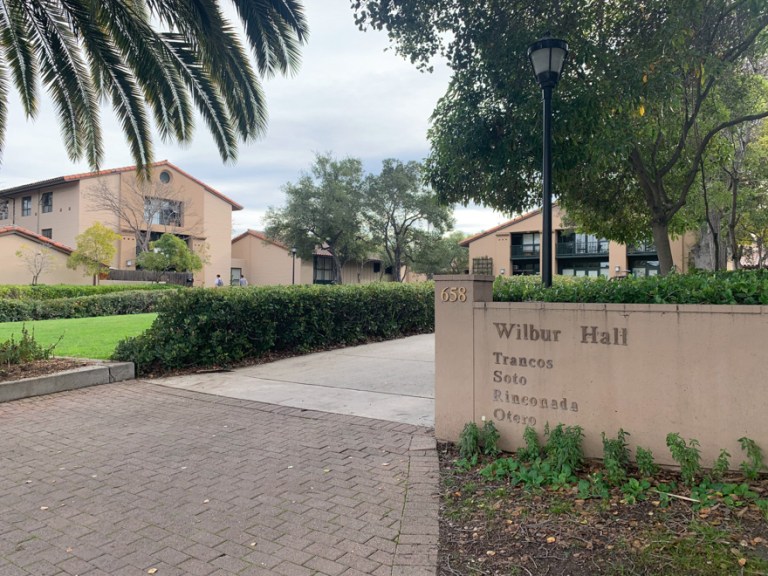In an attempt to simulate a portion of the college experience while taking remote classes, many incoming frosh have been in communication with classmates through group chats dedicated to searching for a place to stay in the Bay Area. Some members of the student body have opposed this choice, describing this behavior as problematic and citing a long history of local gentrification and displacement.
Establishing community
Sidney Hough ’24 plans to room with four other students in the Bay Area. For her, forming a community and making connections with other students is an essential part of the college experience. She will be living in Mountain View, roughly a 10-minute drive from the University. Additionally, she will be half a mile away from some students with whom she has been building a mobile app.
In addition to fostering community, some of the people she had been in correspondence with were trying to leave a situation in which “they felt they just could not focus.” She added that one of her roommates is a track athlete who is allowed to train on campus.
Groups of Stanford students have been coming together in Seattle, as well as Park City, Utah, according to Hough.
Hough initially lived a 20-minute drive away from campus, and despite living away from home for at least one quarter, her parents wanted her to be nearby. She sought out others with similar intentions through Facebook and a GroupMe containing over 500 people, spending a considerable time deliberating with her parents.
“It was hard to get [my parents] on board, and I definitely had to make a lot of compromises with them to get a situation that they were okay with,” she said.
Daniel Fein ’24 has worked to find somewhere to live with other students, as he “was hoping to establish a small community of frosh to emulate the college experience as closely as possible.”
Ultimately, he decided against the Bay Area for a variety of reasons, such as cost, housing scarcity and the spread-out nature of the neighborhoods. Instead, he has shifted his focus to Scottsdale, Ariz., “where there is a surplus of housing based on the sheer availability of Airbnb and Zillow homes.”
A complicated history
After the Bay Area housing market dipped in response to the March stay-at-home order, prices have rebounded and continue to rise despite ongoing worldwide economic turmoil. Starting in mid-May, potential home buyers, especially those in their 30s, have moved back into the market. By June, the median sale price for an existing home had risen to $925,000, a 3.4% increase from last year, according to real estate data firm DQNews.
These rising home prices, even amid a pandemic, highlight the region’s chronic dearth of available homes in tandem with its surging demand. Since the 1960s, Bay Area officials have enacted strict zoning regulations that make it more difficult to permit new housing units. Starting in the 1990s, San Francisco and its surrounding areas have seen a significant shortage of affordable housing, gaining attention in the political sphere. At the same time, Silicon Valley has created a rapidly increasing supply of jobs, resulting in competition for housing on limited land, leaving scarce options for low-income families, some of whom were relegated to RV communities and neighborhoods three cities away.
Student opposition
“Moving into the Bay and taking the few affordable housing units available from low-income families makes you a gentrifier,” Kiara Bacasen and Daniella Caluza wrote in a July 27 Daily op-ed. “It doesn’t matter how well-meaning or ethical you make out your housing decisions to be. People of color and FLI students are not exempt.”
Students interviewed by The Daily said that some international students and athletes see it essential to be near campus, and as Bacasen said, others may need the proximity to jobs to support their families. Students may also be seeking amenities they need for an ideal remote learning experience, including working devices, Internet connectivity and a quiet space to work.
“Yes, we don’t want you to be in situations that are unsafe,” Bacasen said in an interview with The Daily. “We want you to be in homes, in places where you are able to succeed, but we disagree on whether or not that should come at the expense of local people.”
Several individuals and organizations over this year have expressed concern that the coronavirus pandemic intensifies existing inequalities among college students. Now that students are not in the classroom, the playing field is even more uneven. Bacasen said that if she were a frosh, “I probably would have deferred. There’s a lot of things to do with your time other than going to school.”
At the same time, Bacasen believes that there is a gray area.
“The fact that Stanford students are hurting Bay Area communities is not gray,” Bacasen said. “But, whether or not we should tell low-income students trying to support their families to not take these high-paying jobs in the Bay Area, to not do these things that will greatly benefit themselves and cause social mobility for themselves — that is the gray area.”
Contact Matthew Turk at mjturk ‘at’ stanford.edu.
